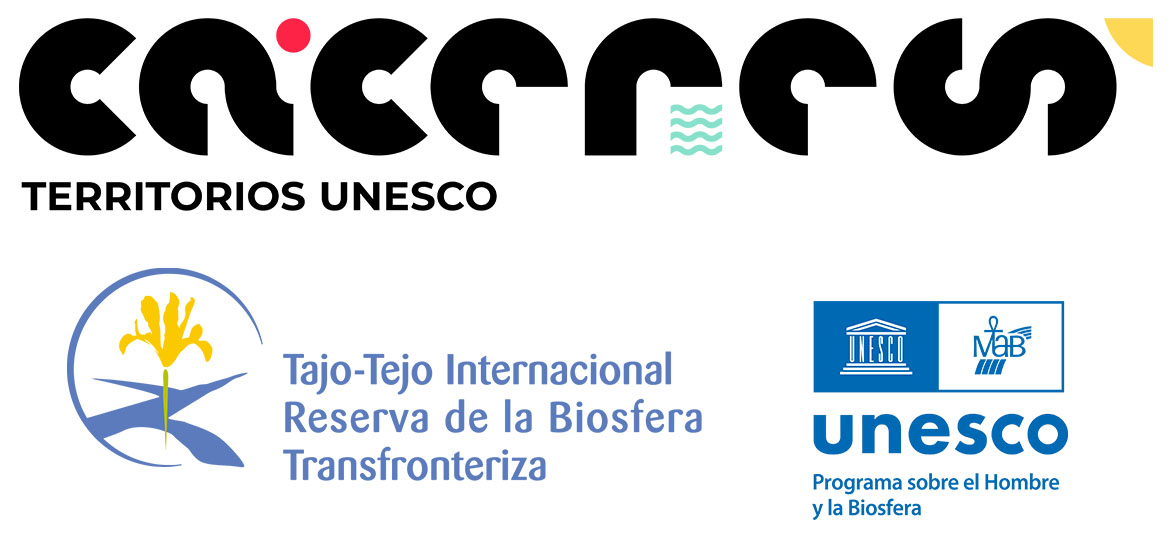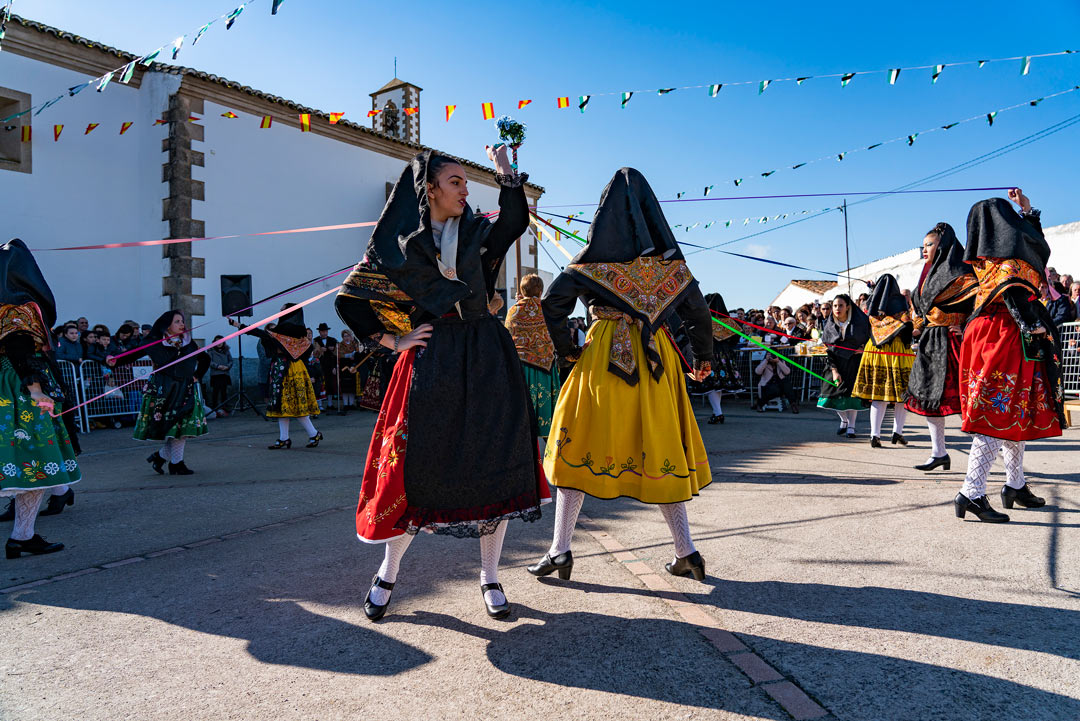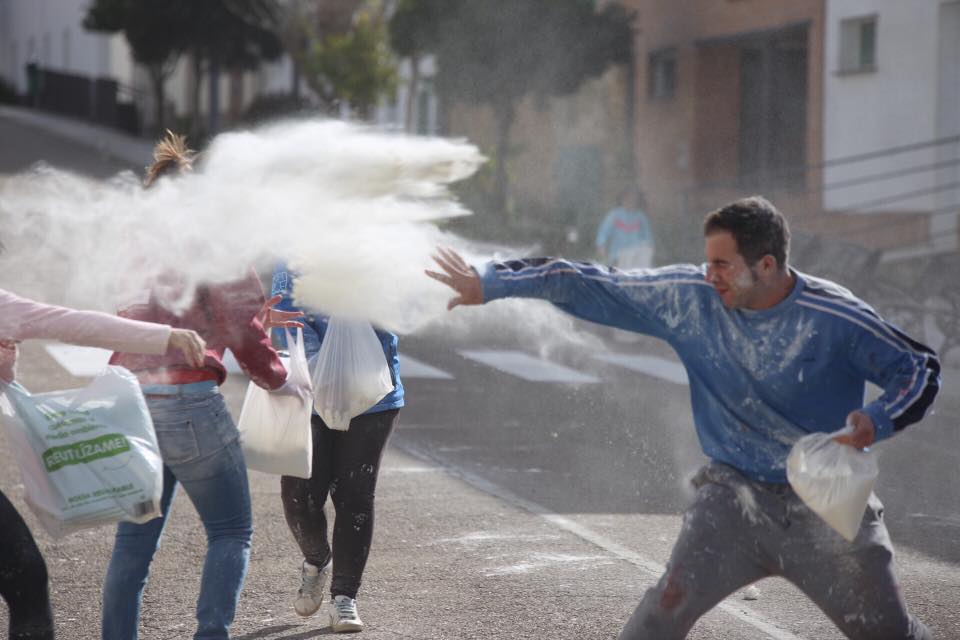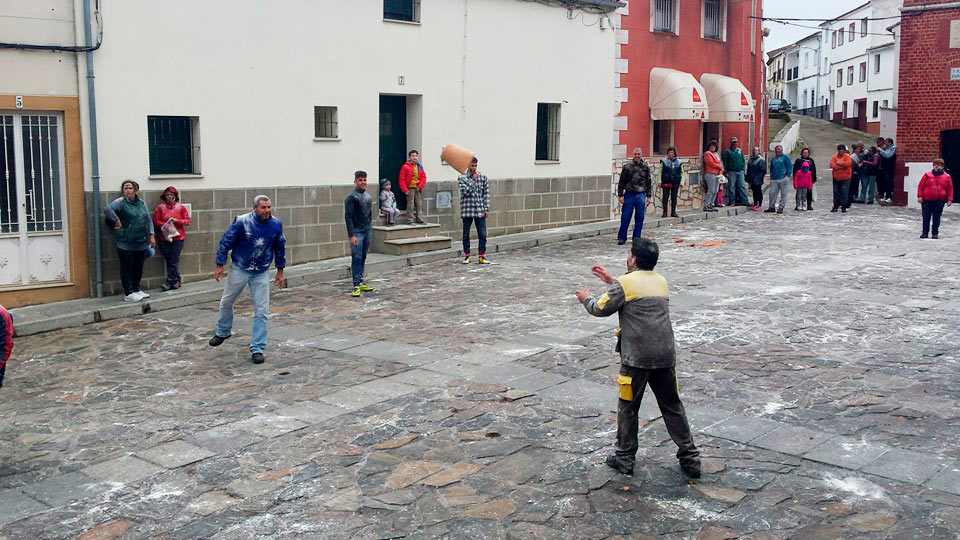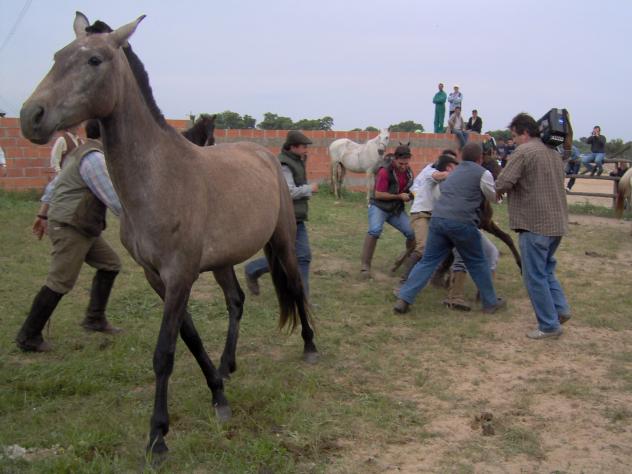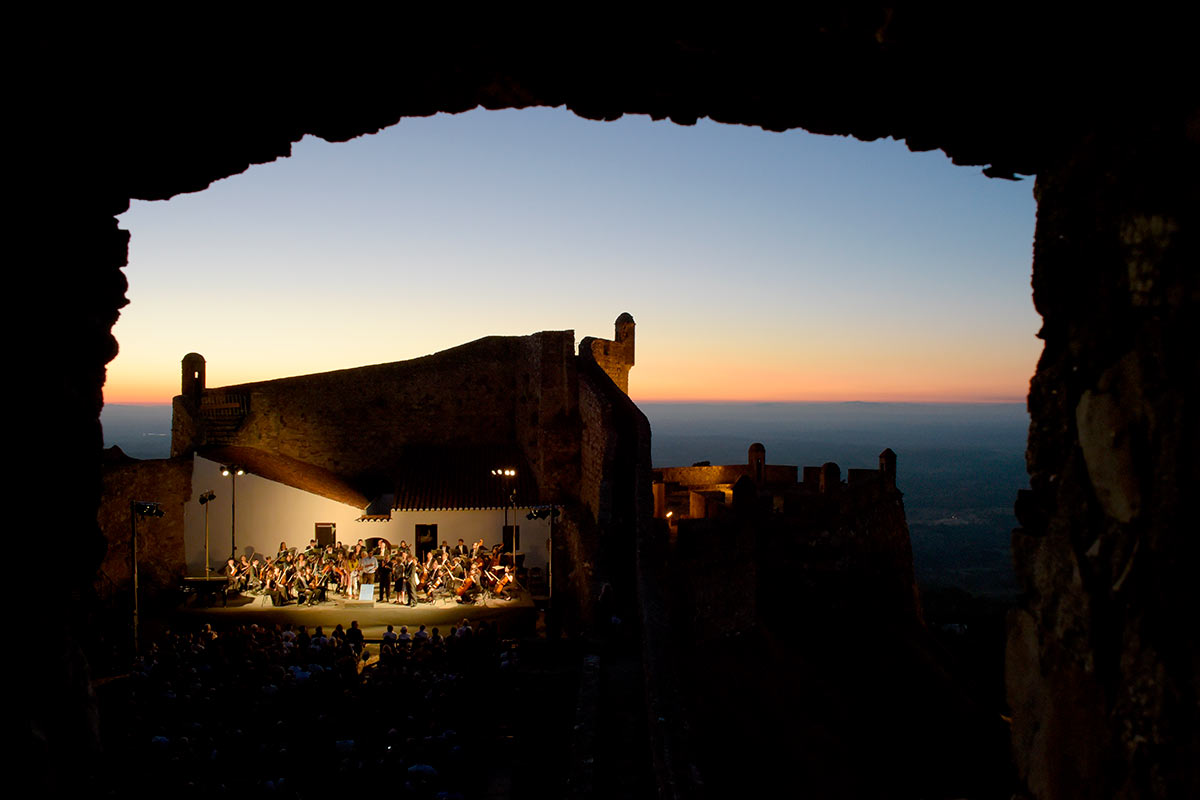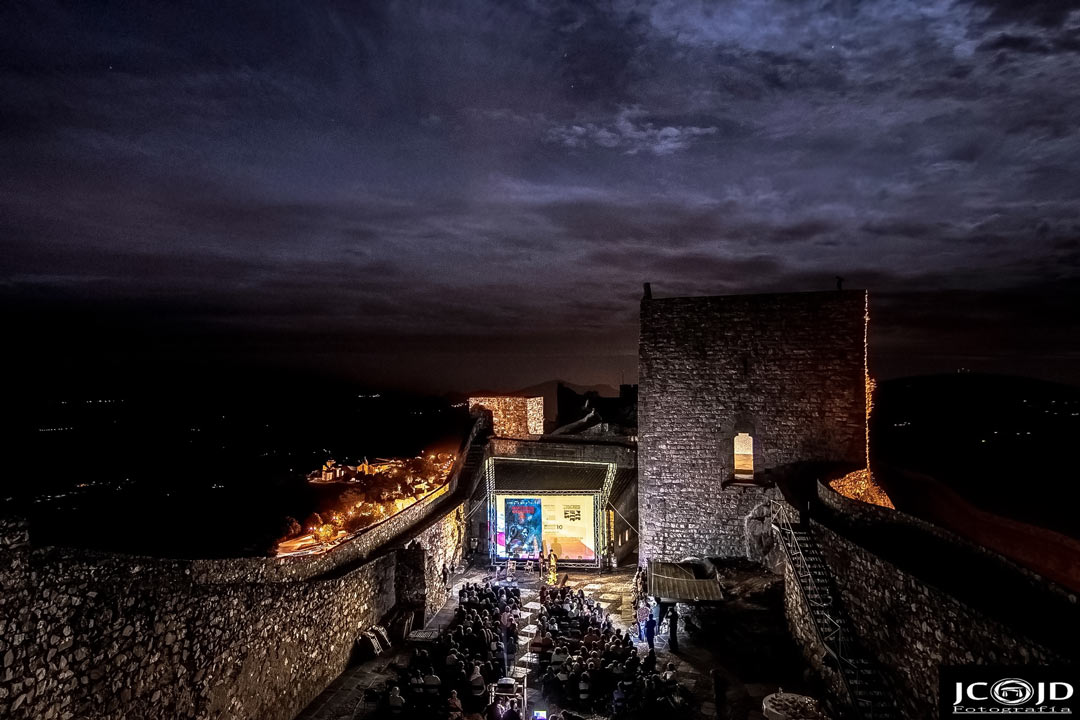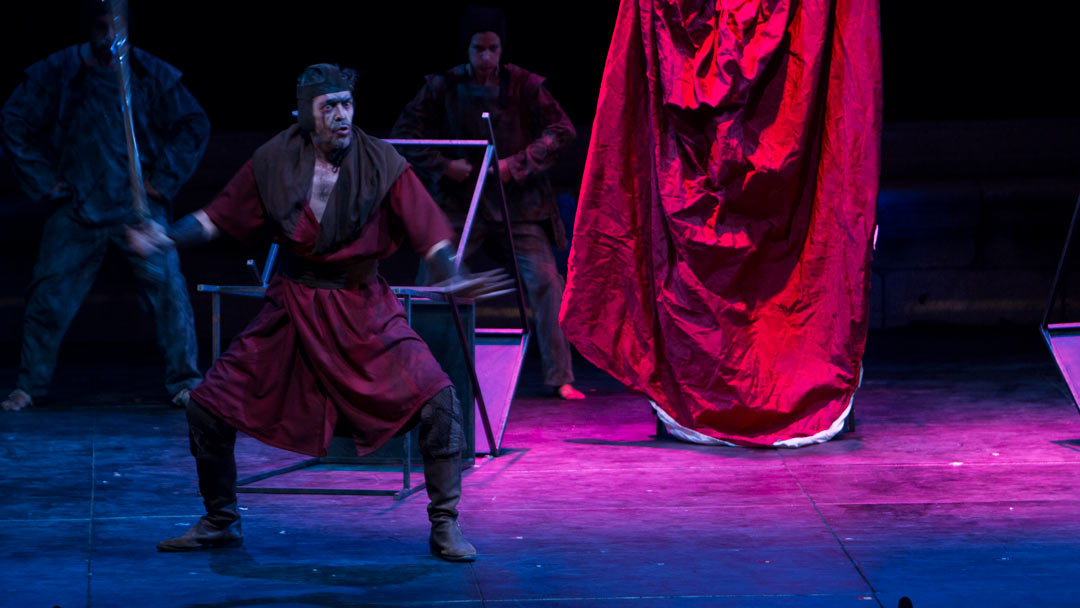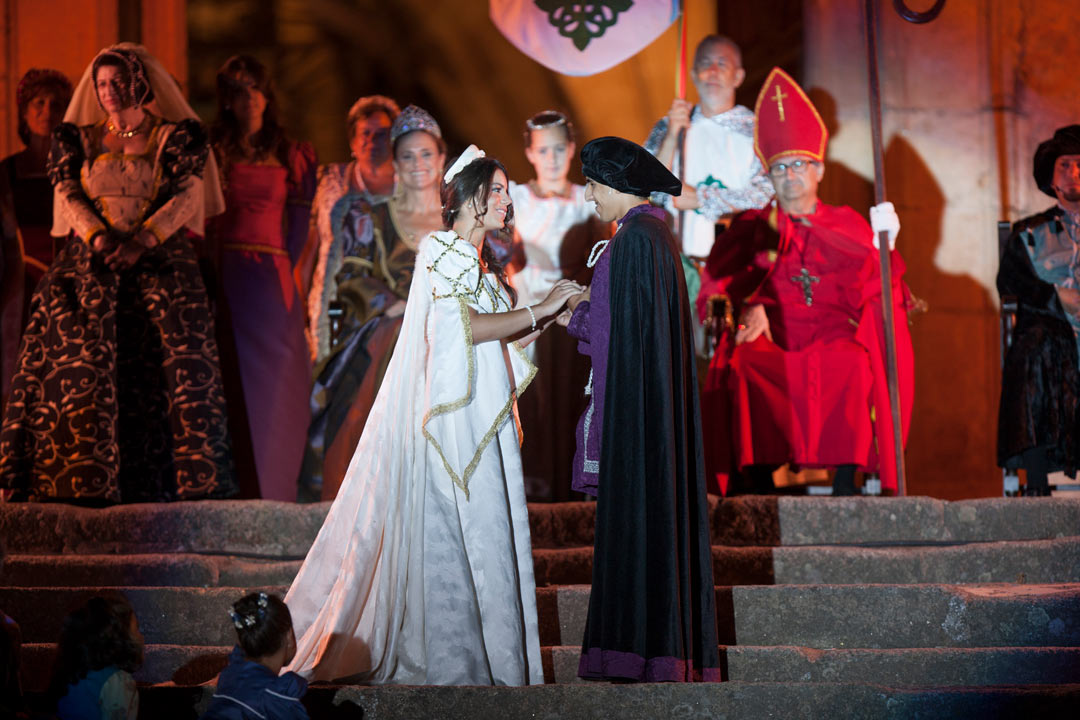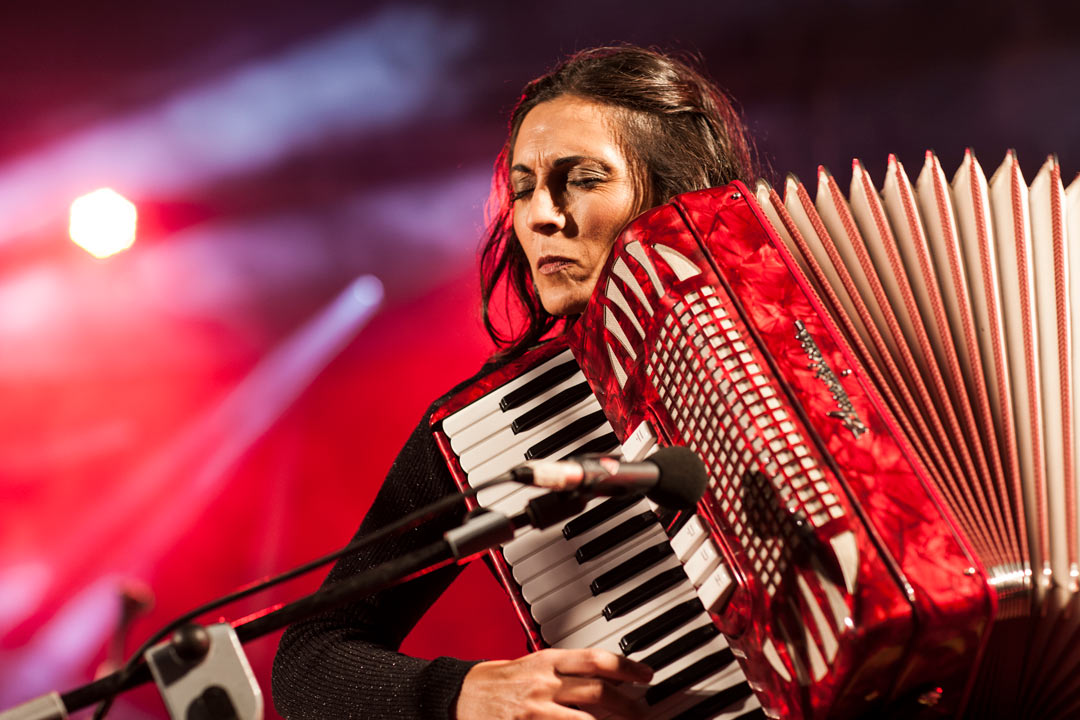Cultural events
of the Tajo Internacional Biosphere Reserve
Tajo Internacional is a place full of culture. Here tradition and modernity go hand in hand in a wide cultural offer which revitalises the territory and generates richness. Let us take us a look at its most important cultural events throughout the year.
January
Festival of San Antón in Brozas
On 17th January to coincide with the saint’s day the big celebration of the festival of San Antón is held in Brozas. In this tradition animals are blessed, bonfires are lit, and ‘El Torcío del Cordón’ is danced. Naturally gastronomy is an important part of the festival of a patron saint and traditional dishes are prepared among which the cabbages stand out (here called Coles con ‘bobo’); traditional products are also auctioned.
February
The Enfariñá of Cedillo
Also known as the ‘enfarinhá’ or Enfariñamiento, this is the finishing touch to the carnival festivals. On Shrove Tuesday the inhabitants of Cedillo throw flour at each other to end the festival of “Don Carnal”. Its origin is unclear but is no doubt Portuguese as the earliest settlers in the area came from the other side of La Raya (the line). Indeed there are several villages in Portugal which hold festivals similar to these of Cedillo.
This festival is unique in Extremadura although the tradition of celebrating the end of the carnival with flour is shared by other villages of Levante and Cataluña.
February
The ‘Mascarrá’ of Herrera de Alcántara
The well-known ‘Mascarrá’ is also celebrated on Shrove Tuesday. Its origin lies in the times when the lads of the village burnt corks to blacken the faces of the marriageable girls who went to the fountains for water in the mornings.
Nowadays the day before young men ‘mask’ with a burnt cork anyone they find in Herrera de Alcántara. After 13:00 hours they stop doing this and the ‘ji.ji’ game begins which reflects the girls’ pitchers which the lads used to break. In a circle the young men throw clay pitchers at each other until they fall to the ground and break. After the game a dish of rice with pork is eaten in the village.
March/April
The ‘Pelá del Potro’ in Mata de Alcántara
On Good Friday in Mata de Alcántara the traditional ‘Pelá del Potro’ is held. This festival originated in the 1960s and consists of cutting the manes of colts on the dehesa of the village. It is organised by the Asociación La Montosa of Mata de Alcántara and is a real celebration which combines stockbreeding tradition, gastronomy, and a multitude of activities related to horses and nature such as hiking routes, horse riding, breakfasts, wine sampling, and meals of fellowship.
May
San Isidro Labrador – Festival of Regional Tourist Interest
The celebration of San Isidro Labrador in Valencia de Alcántara started in the 1940s as a tribute by the countrymen of the village to their patron saint. The event is held in the Church of La Encarnación; villagers in traditional dress make offerings to the saint. Then farmers and stockbreeders carry his image on their shoulders through the streets of the village.
Ever since then, year after year more and more associations and groups of friends or circles prepare their horses or carriages to accompany San Isidro. This massive participation and the touristic relevance of the festival together with its cultural values and the maintaining of traditions meant that the Fair of San Isidro was declared a Festival of Regional Tourist Interest by the Regional Government of Extremadura on 13th June 1989.
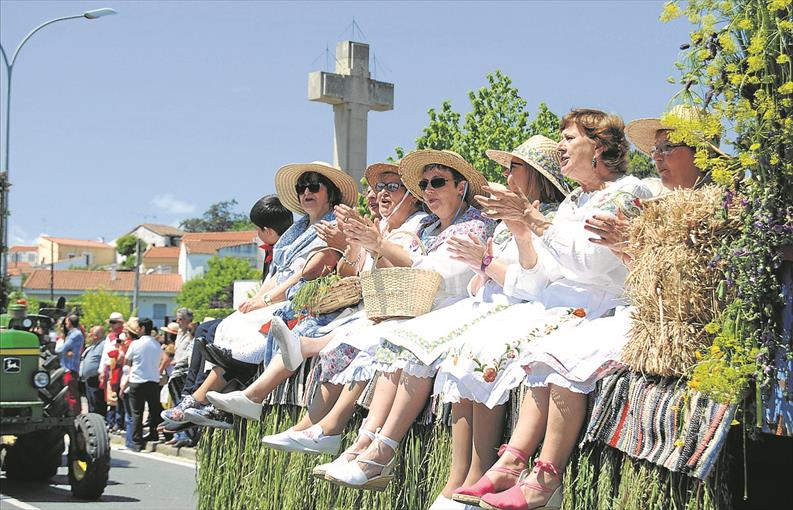
July
International Music Festival of Marvão/Valencia de Alcántara
In late July the streets, plazas, and churches of Marvão and Valencia de Alcántara are filled with the best classical music. This festival enhances its frontier character of a melting pot of cultures. Its main objective is to encourage friendship and collaboration between different peoples through music. Its key features are therefore musical fusion and the preservation of the historical heritage and the culture of La Raya. Owing to its carefully planned programme this competition has become a point of reference in Portugal and an event not to be missed by lovers of European classical music.
July/August
Periphery International Cinema Festival of Marvão and Valencia de Alcántara
This competition brings the best cinema to both sides of La Raya. It is held in late July or early August and its maxim is the defence of human rights, sustainability, and the fight against depopulation.
Its international programme recovers the tradition of open-air cinema as a popular spectacle and concentrates on bringing the best titles of social protest to the inhabitants of La Raya and its visitors.
August
Alcántara Classical Theatre Festival
The Gallery of Charles V of the Conventual de San Benito holds one of the most firnmly established theatre festivals in Spain. During the first few days of August Alcántara is transformed into a medieval town with a multitude of theatre performances in the street and parallel activities as part of the festival.
When night falls, the Conventual raises the curtain of the main stage so that you can enjoy the best Spanish plays. At the weekend it is the turn of the medieval market, children’s activities, and concerts. A true journey back in time through the Middle Age to the Golden Age.
July/August
The Royal Wedding at Valencia de Alcántara
On the first weekend in August Valencia de Alcántara shows its best face to commemorate the wedding of the Infanta Isabel, the first-born of the Catholic Kings, and Manuel of Portugal ‘the Fortunate’, in 1497.
The festival begins in Portagem near Marvão and continues in the Jewish Gothic Quarter of Valencia de Alcántara. The whole town goes back in time to the 15th century thanks to the setting of the street market, passacaglia, medieval tapas, and the culmination of the festival with the procession of the retinue. A true Royal Wedding of the time of the Catholic Monarchs!
August
Salorino Copla Festival
In the third week in August Salorino puts on its finery to hold the Copla Festival. In this way the village plays a special tribute to the Spanish popular song. This festival also courts the related flamenco and the well-known fado of Portugal. This musical event is held at different venues in the village and we have seen under the lights stars such as Pilar Boyero, Juan Valderrama, and Clara Montes.
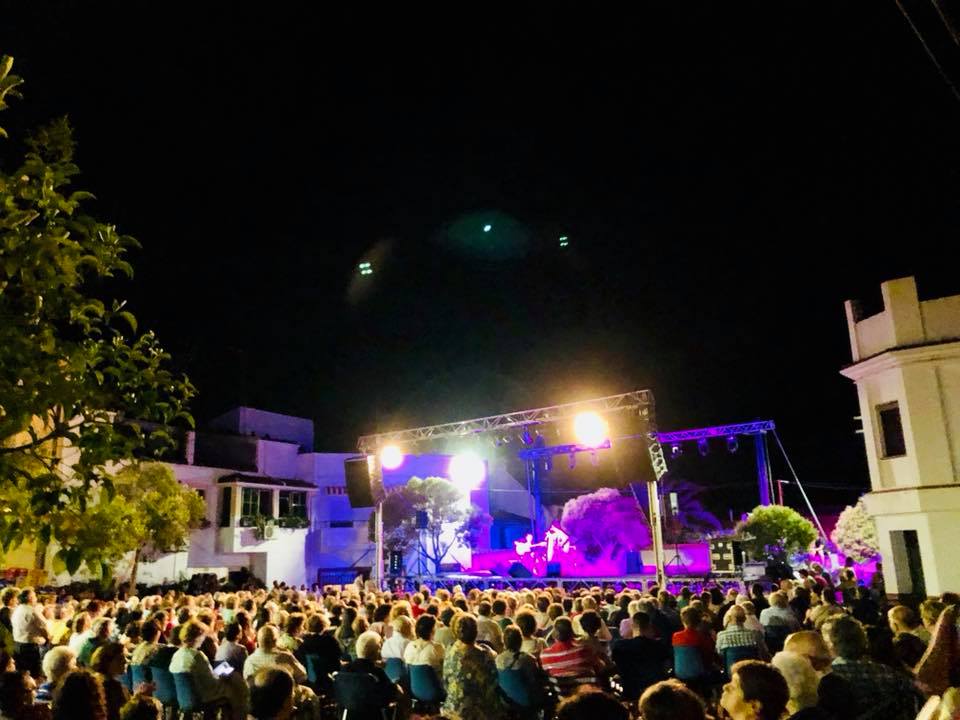
November
The Magusto Celtic-Folk Festival
Carbajo fills with Celtic and folk music during the All Saints’ Weekend. This is an echo of the Samhain, the ancient Chestnut Day of the Celts, which was already being celebrated in the 5th century B.C.
If this were not enough, the Magusto, which is the name by which this festival is known in some areas of the north of Spain, always organises parallel activities so as to enjoy this environment which are always related to sustainability. These include talks or round tables on ecology or sustainable development without forgetting activities such as archery, yoga, or paintball for children.
November
Biosphere Reserve Month
The Biosphere Reserve is a territory which retains its cultural and biological diversity and reconciles it with its economic and social development through the relationship of its inhabitants with nature.
Therefore the Biosphere Reserve Month, which is held in November in the two biosphere reserves of the province of Cáceres, Tajo Internacional and Monfragüe, is a unique opportunity to get to know nature and culture at first hand. Hiking, routes on horseback, archaeology, botany, or cruises on the Tajo are some of the activities carried out during this month.

